General laboratory facilities


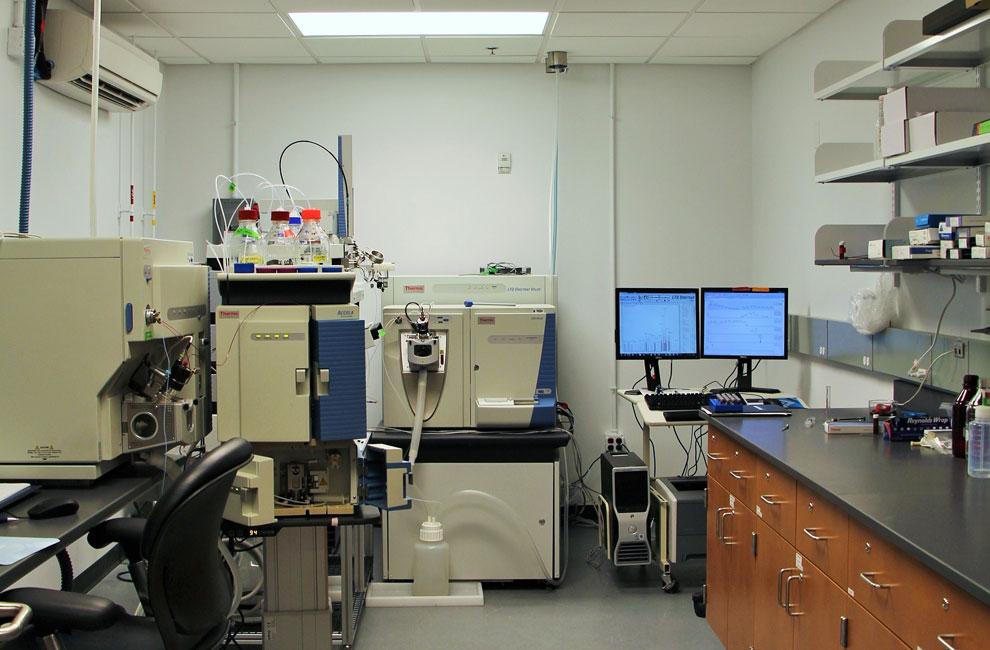
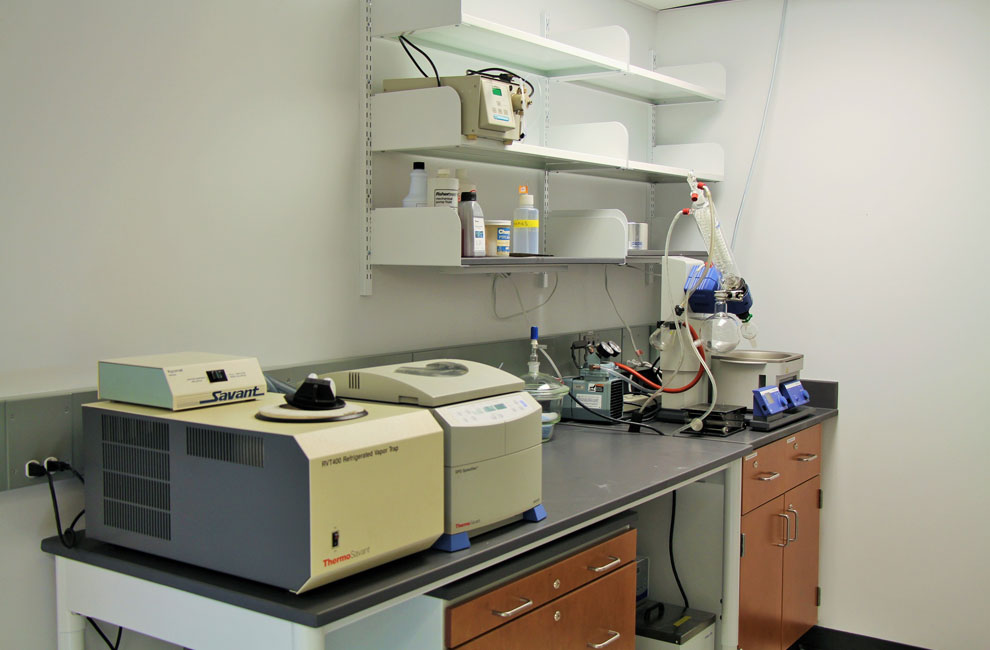
Our wet laboratory and instrumentation spaces are located on the third floor of Gross Hall on Duke's West Campus. The laboratory is optimized for trace organic analysis, nanoparticle characterization/preparation, and biochemical and bioanalytical research.
Resources include computers, evaporators, (ultra)centrifuges, ovens, a muffle furnace, a refrigerated shaking incubator, protein purification chromatography equipment, ultrasonicators, as well as the major instrumentation described in detail below.
ThermoFisher Scientific LTQ-Orbitrap Velos tandem mass spectrometer with custom 2D-UHPLC system

Our LTQ-Orbitrap Velos is the analytical centerpiece of the laboratory. It is highly optimized for trace analysis of targeted and non-targeted organic contaminants in the environment using high-resolution, exact mass MS and MS/MS. We utilize ESI, APCI, and APPI ion sources in combination with a custom-built 2D-UHPLC system for analysis of complex environmental mixtures.
Dionex Ultimate 3000 - custom built 2D-UHPLC System
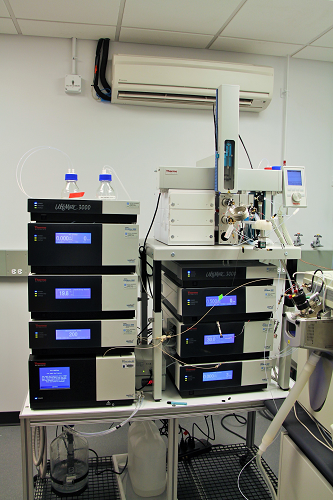
Agilent Technologies A7809 GC System
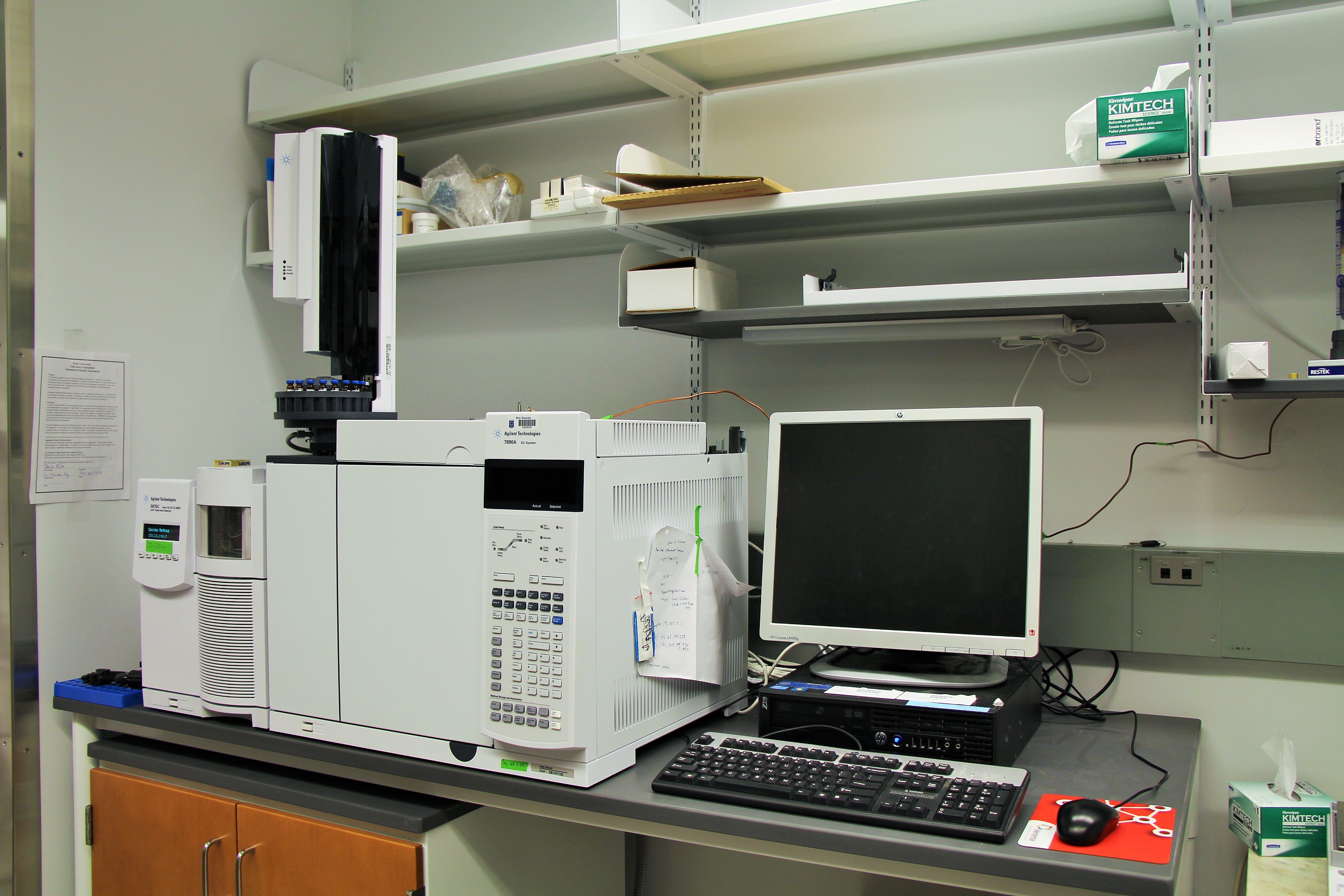
ThermoFisher Scientific TSQ Vantage Mass Spectrometer

Applied NanoFluorescence NS1 near infrared laser fluorometer
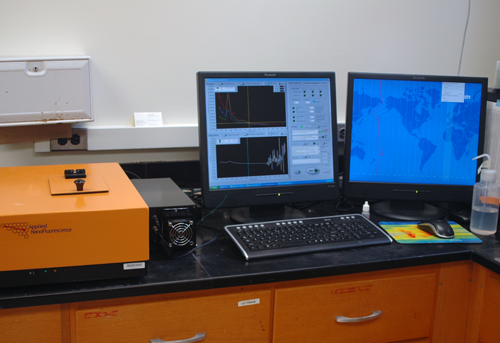
The NS1 is a highly specialized instrument used exclusively for quantitative and qualitative characterization of single-walled carbon nanotubes in solution. We use it for trace analysis of these nanomaterials in environmental samples such as soil, sediment, tissue, and water.
Agilent 7700 ICP-MS
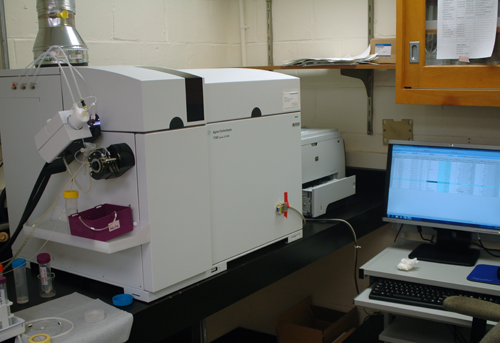
This quadrupole ICP-MS is a shared resource administered primarily by Dr. Hsu-Kim's laboratory in CEE. It is a state-of-the art instrument equipped with a reaction/collision cell for reducing isobaric interferences. We use it in combination with particle separation methods (e.g. field-flow fractionation) to detect and quantify nanoparticles in the environment.
Wyatt Eclipse 3+ asymmetric flow field flow fractionation system (AF4)

The AF4 system is used primarily for separation of carbon nanotubes and other nanoparticles extracted from environmental samples prior to analysis by either NIR fluorescence or ICP-MS.
Dionex Autotrace 280 solid phase extraction system
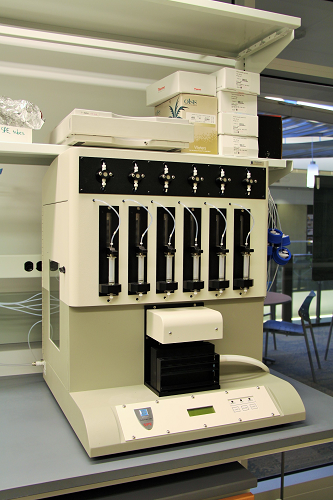
This automated solid-phase extraction system is extremely versatile and allows rapid method development and implementation of reproducible sample processing for isolation of organic contaminants from water samples. We use it in combination with the Orbitrap MS (above) for analysis of polar organic contaminants such as endocrine disruptors, pesticides, and pharmaceuticals in the environment.
Agilent 1100 HPLC with DAD, fluorescence, and ELSD detectors

This general-purpose HPLC is configured as a highly flexible platform for analytical and preparative separation of a variety of organic analytes. The diode array detector is useful for analysis of dyes in aircraft deicer fluids, the fluorescence detector is highly sensitive for aromatic hydrocarbon analysis, and the evaporative light scattering detector allows quantitation of non-chromophoric compounds such as alcohol ethoxylate surfactants.
Waters 600 gel permeation chromatograph

The GPC system is used as a sample purification/cleanup tool. It allows removal of high- and low-MW interferences from complex environmental extracts. We also use this system as a resource for bioassay-directed fractionation experiments in support of "toxicity identification and evaluation" (TIE) experiments.
Molecular Devices Spectramax M5 microplate spectrofluorometer

The Spectramax is a versatile instrument capable of UV/Vis spectrophotometry, fluorescence spectroscopy, time resolved fluorometry, and measurement of fluorescence polarization, all in a microplate or cuvette format. We use it for a variety of purposes, from simple UV/Vis spectral acquisition to protein assays, to fluorescence polarization-based ligand-receptor interaction assays.
Bio-Rad Biologic HR fast protein liquid chromatograph (FPLC)
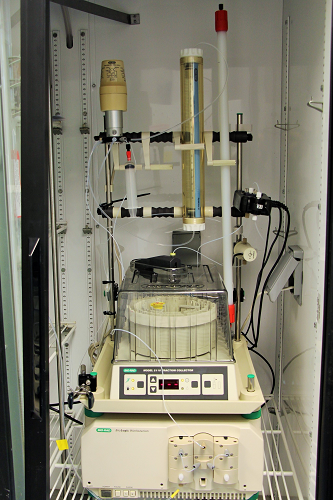
The Biologic HR FPLC is maintained at 4° C for purification of active recombinant proteins from bacteria or baculovirus cells. We use it to produce nuclear hormone receptors (e.g. estrogen and thyroid hormone receptors) and other proteins for environmental bioassay or bioanalytical applications.